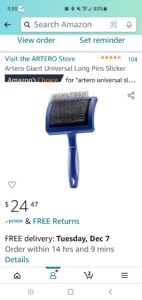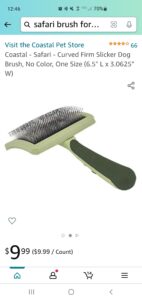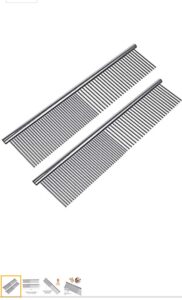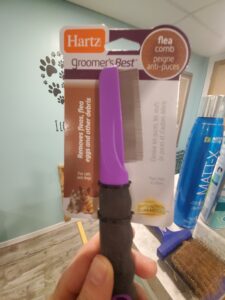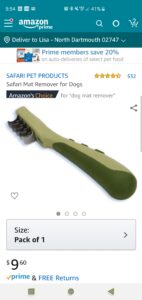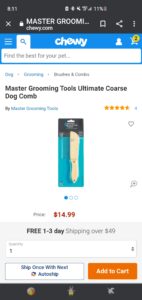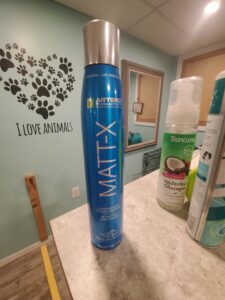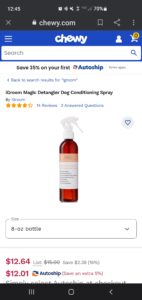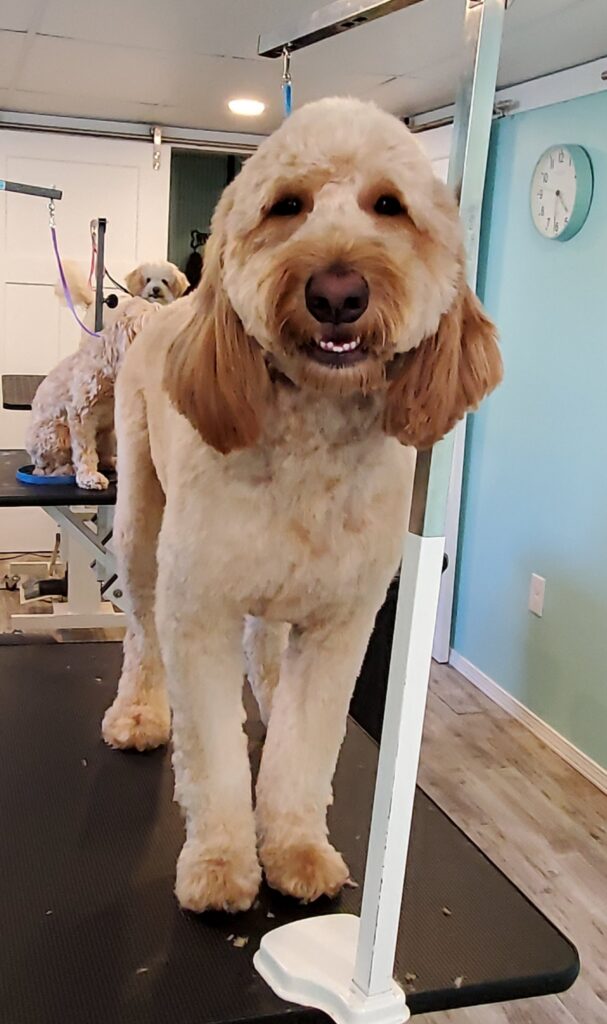
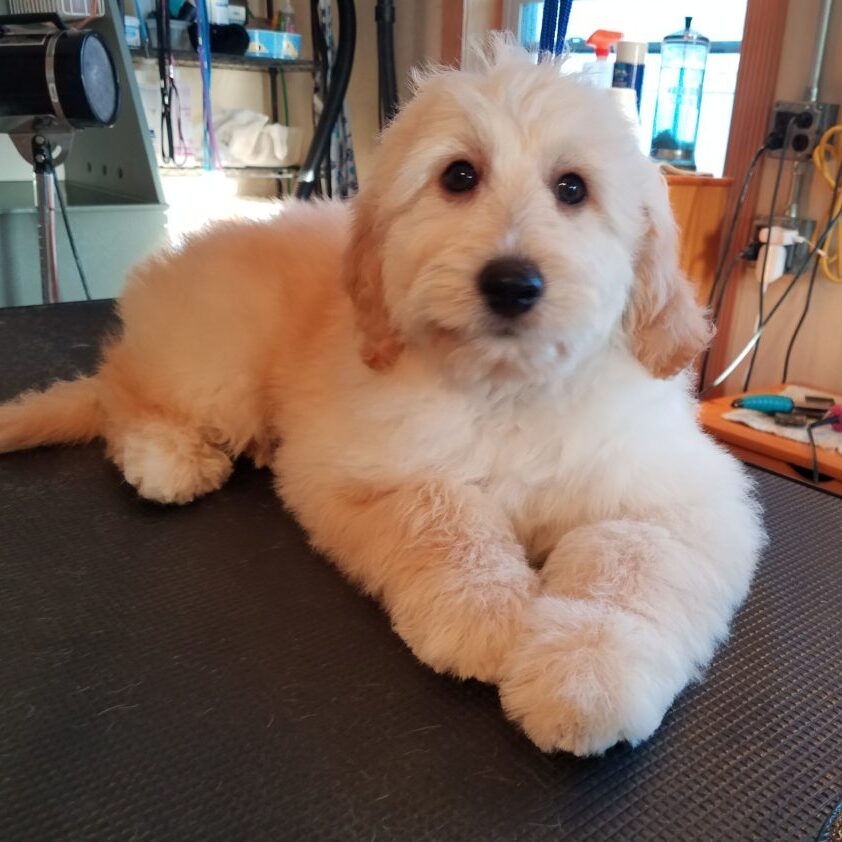
Let's talk doodles
Doodles have quickly become the must have dog, with their sweet temperments, high intelligence, and beautiful wavy or curly coats. Whether you have a Goldendoodle, Labradoodle, Bernadoodle, Aussiedoodle, Cavapoo, Maltipoo, Cockapoo, Shipoo, or some other combination, we are ready to groom them. We are also here to help you understand the maintenance and conditioning required to keep your dog at the desired length.
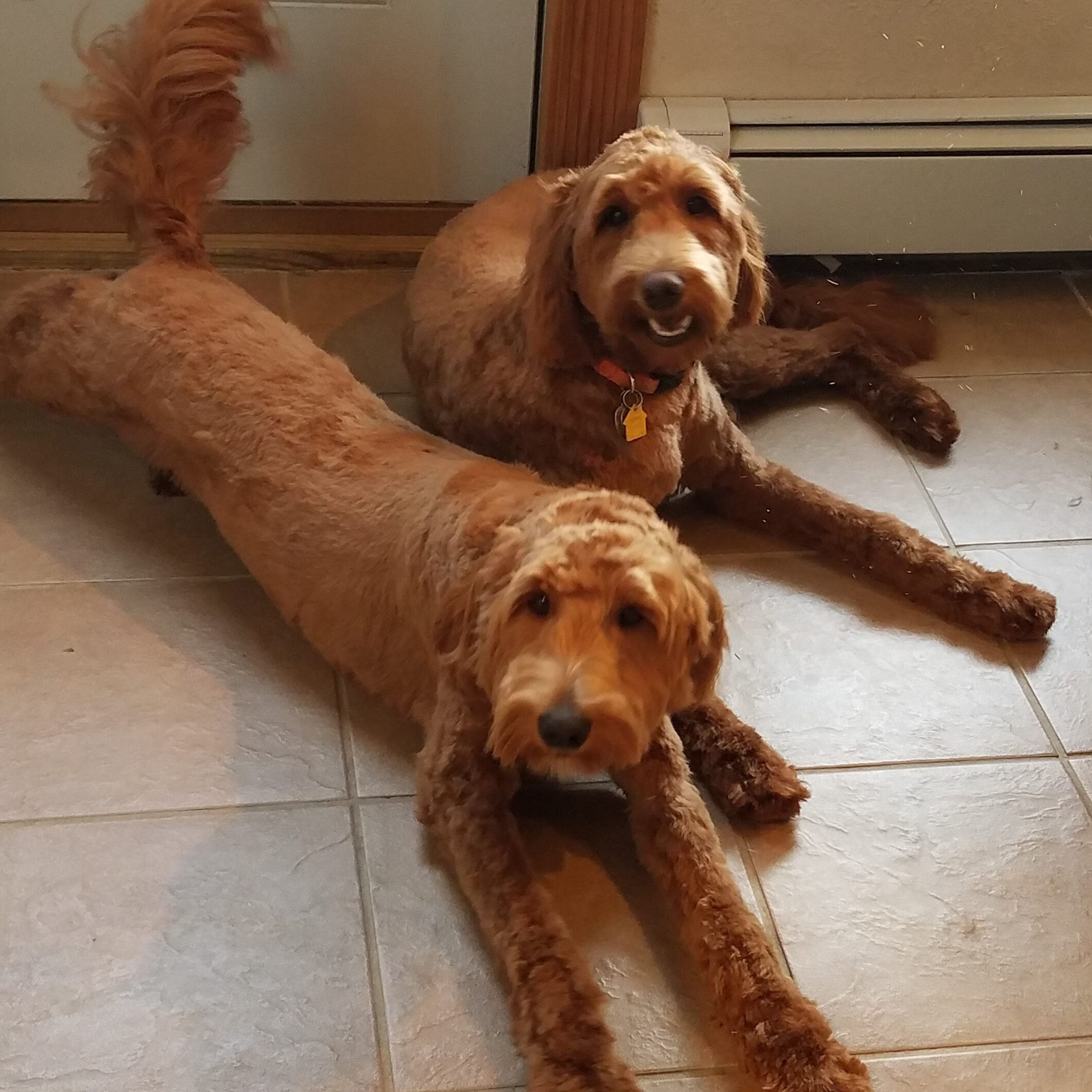
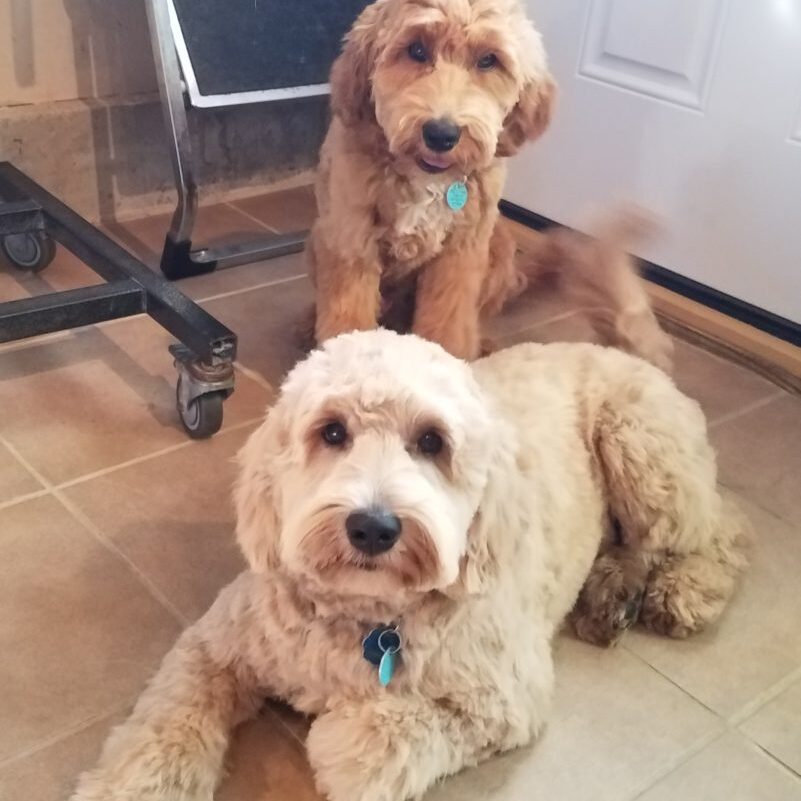
Why we need to educate
We are consistently seeing owners come in with no information or misinformation provided from the breeders on grooming. Remember, breeders want to sell you this puppy. Telling you this puppy needs intensive, daily home grooming may change your mind, and therefore most breeders tell potential doodle parents this is a 'low maintainence' coat. This could not be farther from the truth. This misconception leads owners to do minimal homecare initially and wait too long for first groom, bringing in a dog that has not been maintained and is matted beyond saving. It is disheartening to us when we are left with no choice but to do a short, shaved puppy cut and have an owner leaving disappointed. Our goal is to give you the look you want, but our motto is to do right by the dog. We love being able to do both.
![20190410_150933[1] 20190410_150933[1]](https://shampooch.org/wp-content/uploads/bb-plugin/cache/20190410_1509331-768x1024-square-eb66c2dc8fe46752cc6851a60813729d-5c70e3ad219fd.jpg)
![20190227_153020[1] 20190227_153020[1]](https://shampooch.org/wp-content/uploads/bb-plugin/cache/20190227_1530201-576x1024-portrait-0f126b6f8a1b14523f453ee0bc53f00d-5c70e3ad21a76.jpg)
A variety of coats
Mixing poodles with all these breeds has created a wide range of coats. Your dog can have a wiry or a soft coat, a thin or thick coat, a minimal amount of hair or a mountain load, be wavy or super tight ringlet curls, have a full or no undercoat whatsoever, or anywhere in between. You technically have a mixed breed dog which means there is no standard conformity. On top of all this, your dog's puppy coat is not indicative of its adult coat at all. You may start with a super relaxed wavy coat, and about a year in it turns into tight curls. Don't worry, we are here to help navigate you from puppy to adult coat and all the grooming needed in between.
The first thing is to take everything you know about dog hair and throw it out the window. This is not 'labrador retriever' fur that grows one strand, it falls out, you vacuum it up. This is a complex curly coat of real hair. It doesn't fall (shed) out, it unravels. This unraveling (frizz) is the indicator your pup needs a trim. The trim helps take off the dead part of the strand (the unraveled, frizzy part) and restrengthen the strand for a healthy coat. The strand can never be 're-raveled', it has to be trimmed off at the frizz line, and the longer you go between appointments the more frizz we need to take off.
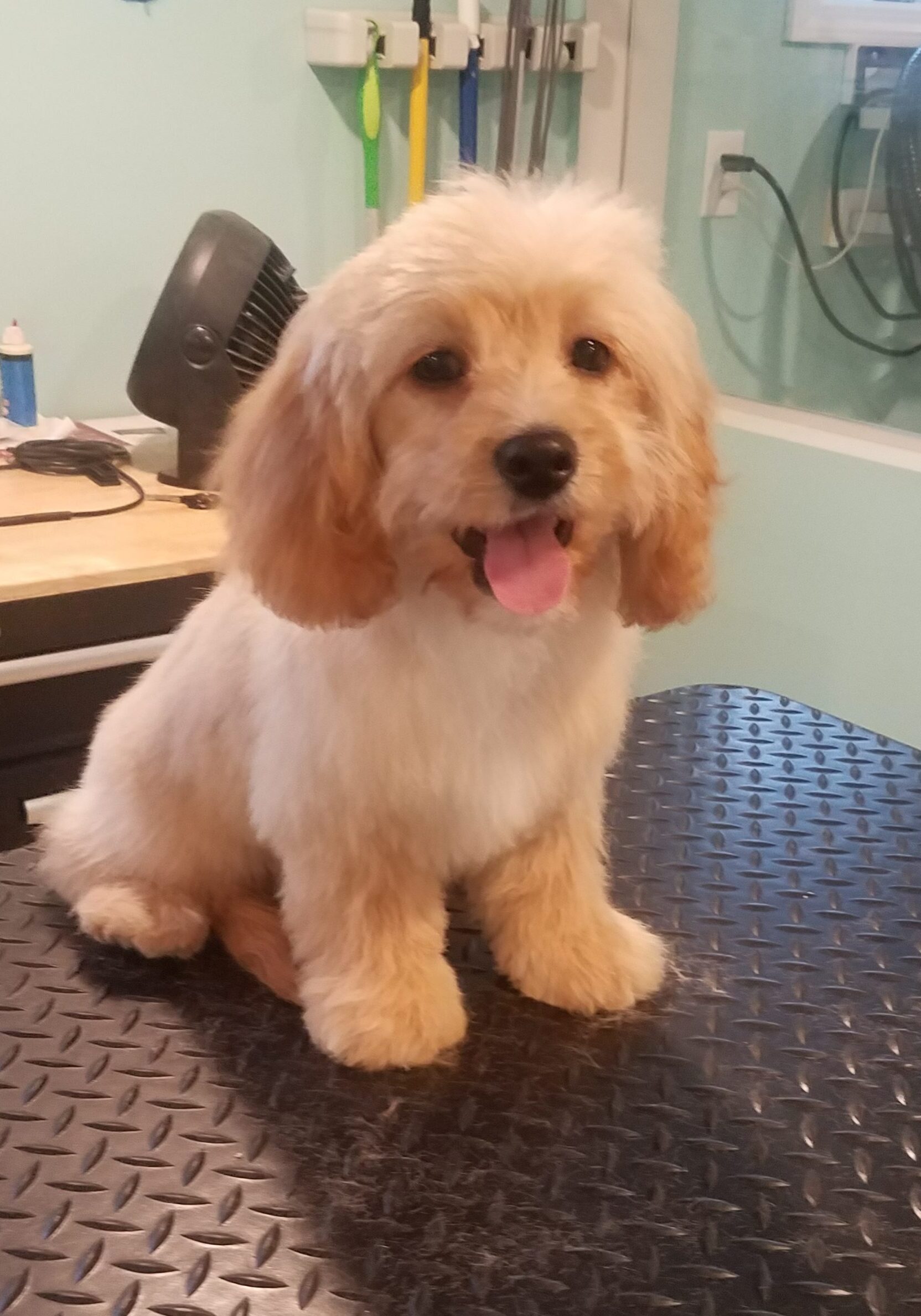
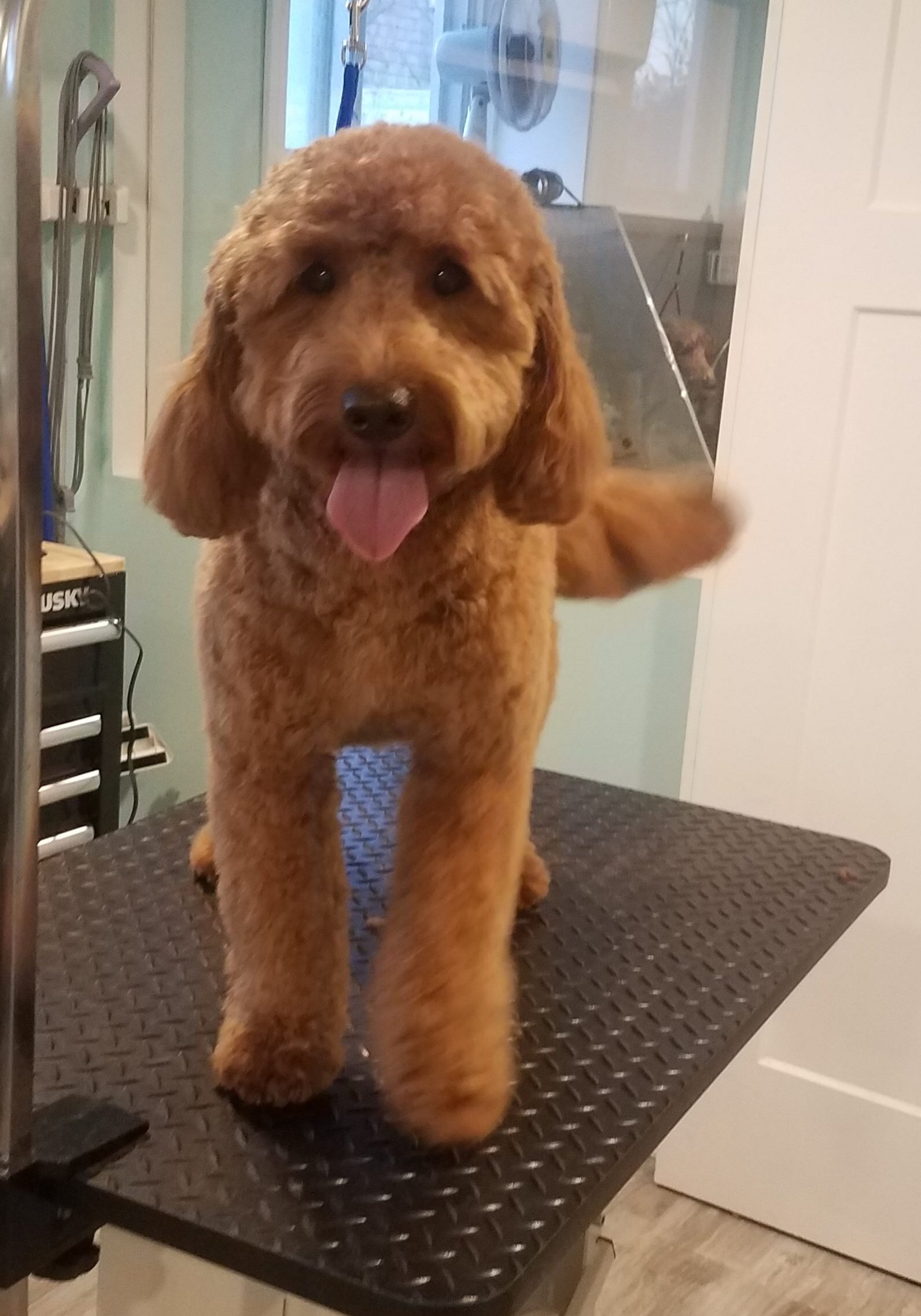
Let's start at the beginning
Your doodle puppy should have it's first groom around 3 months. This will entail a bath, nail trim, and clean up of some areas (feet, face, fanny). This first visit will help them acclimate to the grooming environment, while not requiring them to stand still for a full haircut. Their first full haircut usually happens at 4 months, this keeps the strands in tact while they grow. After that first haircut they should be groomed monthly the entire first year until their puppy coat transitions to adult coat. We will show you the grooming tools you need for home (I've posted pics below) and how to use them to keep up between groomings and teach your pup that grooming is part of their everyday life.
Properly introducing your pup to grooming is crucial. We often see doodle owners wait too long to bring them in for their first groom, or not bring them in regularly their first year. This creates an uncomfortable experience for your pup, and then they act adversely to grooming in future appointments. Our instruments are sharp, and dogs need to be calm and behaved to get a completed groom. That good behavior is learned by repitition. Pawing and biting at brushes and scissors, jumping around, and overall wild behavior can result in serious injury. When these behaviors persist, dogs need sedation grooming (at the vet) to be safely groomed.
Grooming is a learned skill just like every other training you do with your puppy. The more you do it, the better they get. Our goal is to see your puppy early and often, get them to love us while teaching them how the grooming process works. We never 'muscle' a puppy that won't stay still to get the perfect groom. We strive to get them neat and clean each visit as the 'training' progresses.
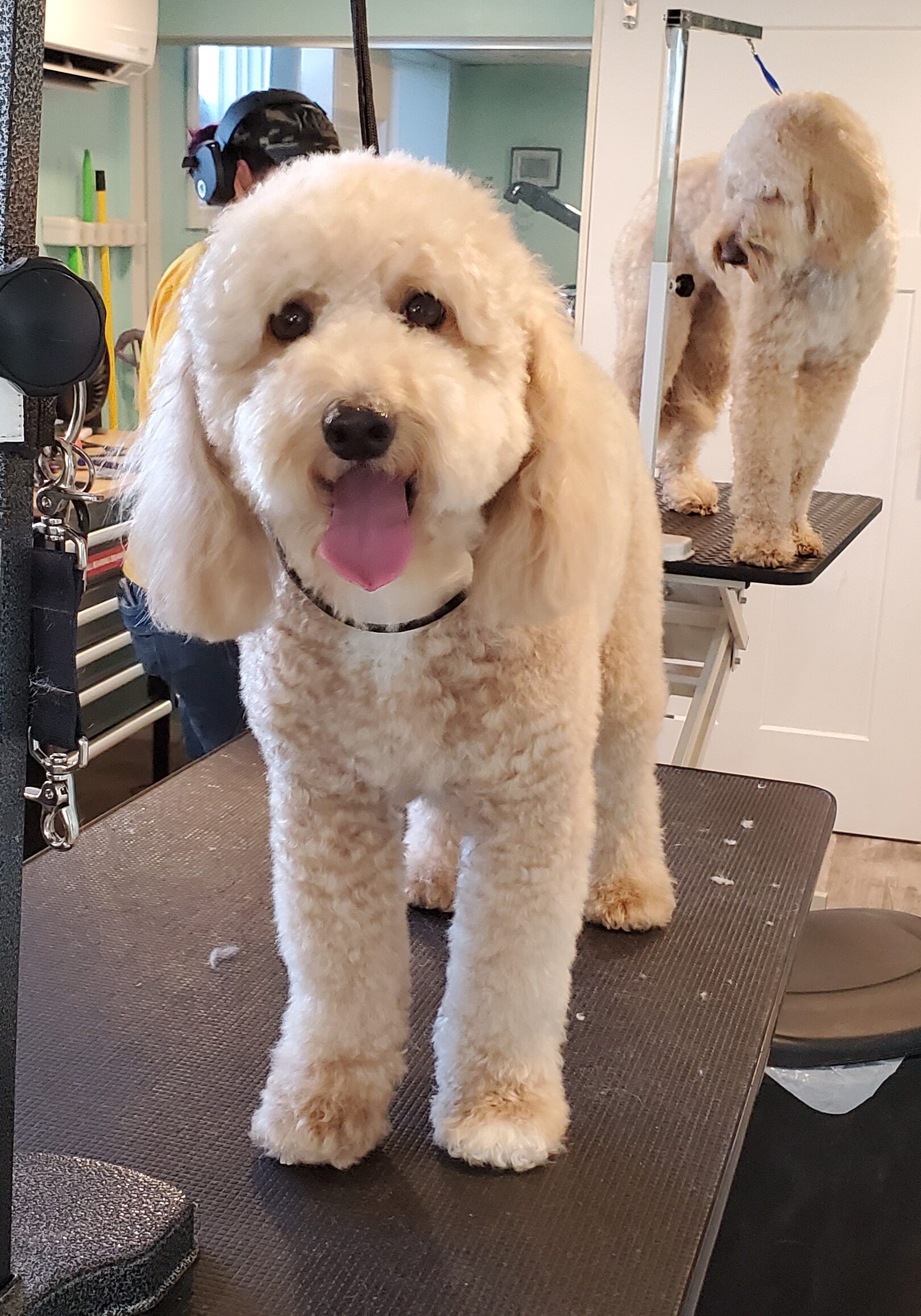
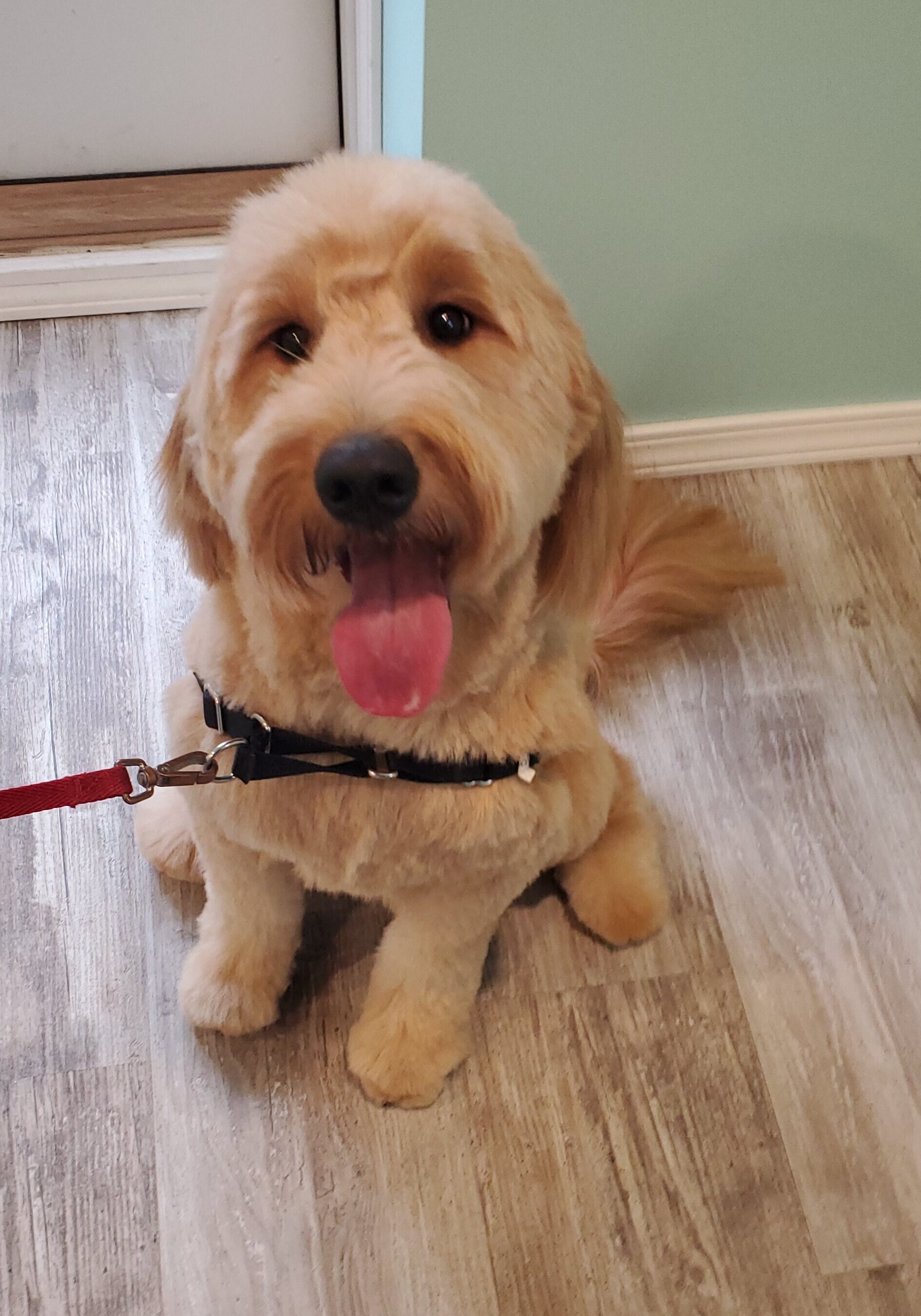
What is matting?
Matting is a network of knots. Mats attach to the skin and ultimately damage the skin by restricting blood flow and air. Mats can also trap moisture and urine near the pet's skin allowing mold, fungus, yeast, and bacteria to grow.
Mats are painful to your pup when they are removed. Mats can peel the skin right off as they are being removed, or leave swollen areas of irritated skin as the blood flow returns to that area, leaving dogs to want to scratch or lick at the site.
Our goal will always be to put your pet’s comfort above all else, and will not cause serious or undue stress to your pet by dematting. Removing a heavily matted coat can cause nicks, cuts or abrasions, After-effects of mat removal can include swelling, itchiness, and skin redness.
This link will give you a better understanding of your dog's coat and has all the FAQ of matting. I have never seen mats explained better and I encourage all doodle owners to read it: Preventing Mats and Tangles .
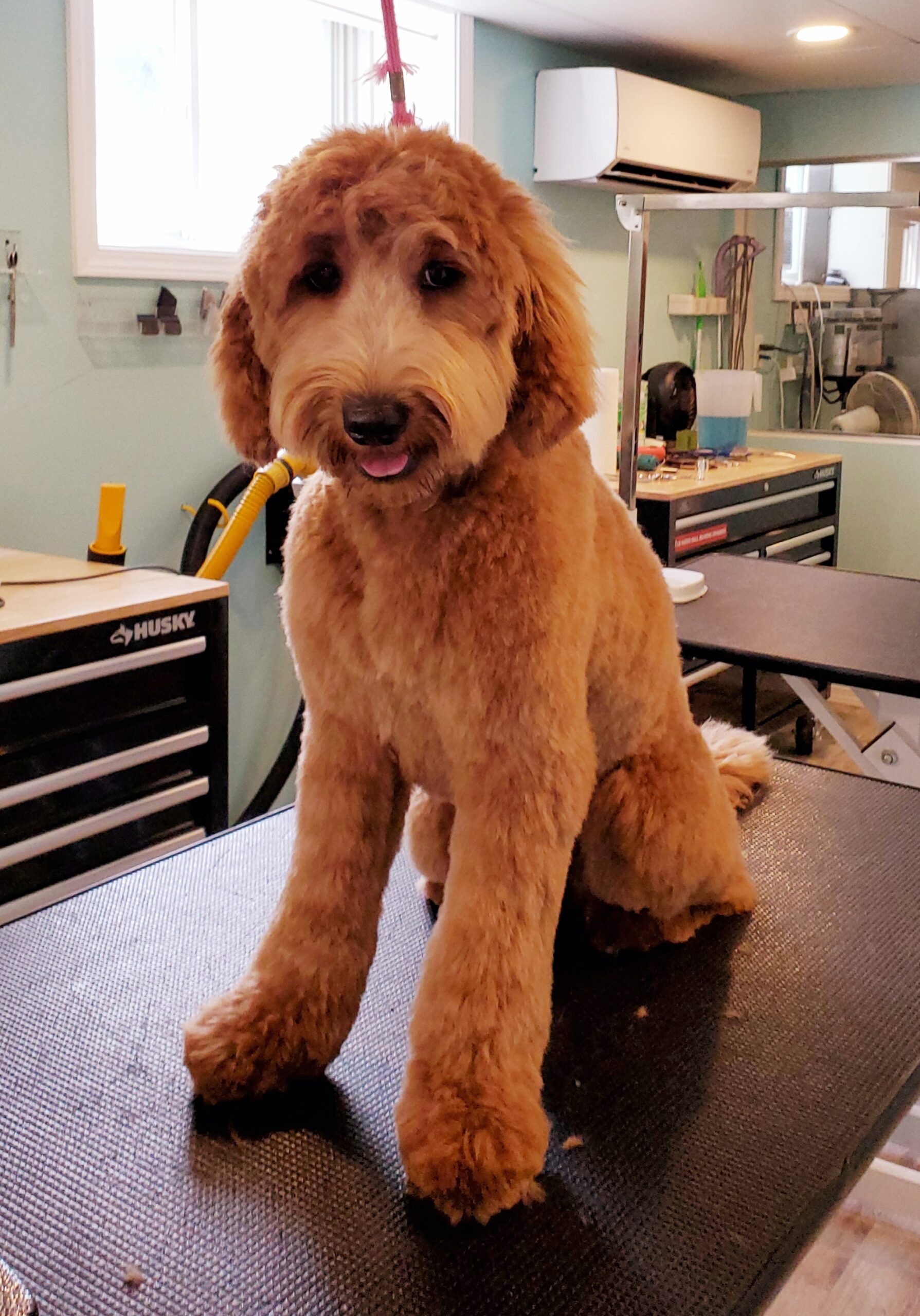
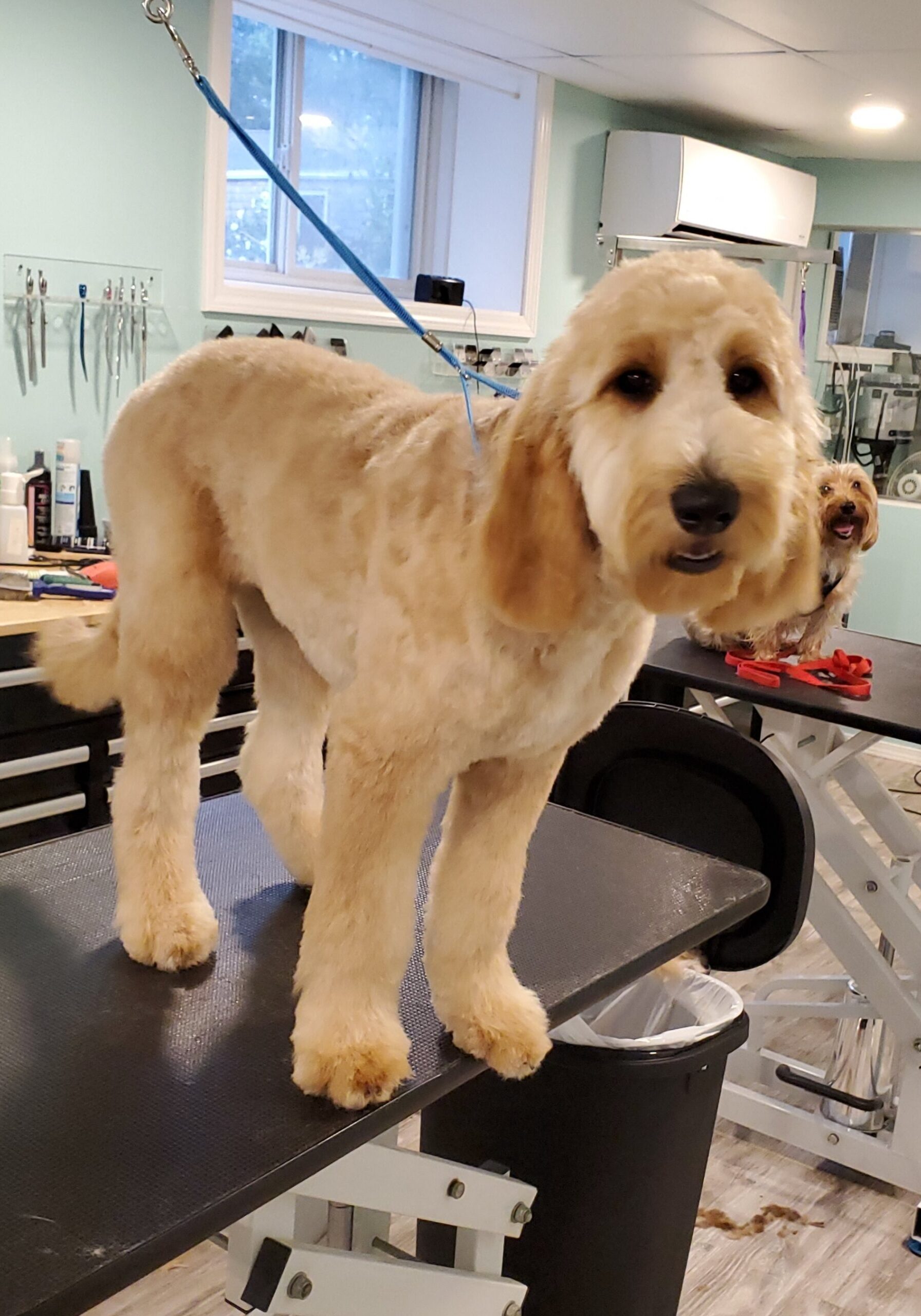
The Tools
You only need a few tools to groom your doodle. You need a slicker brush and a comb. The slicker brush is used to separate the strands to keep tangles from forming. The slicker brush should be used DAILY to identify any areas that are becoming troublesome. If you are using the slicker and hit a tangle, then you use a comb to separate and remove the knot. Picking a metal comb that has a wider side and a tighter side helps with knot removal. After you are done brushing with the slicker, you should be able to run your comb through the entire coat without snagging. Some of our favorite slicker brushes are the Artero long pin slicker, and the Safari curved firm slicker brush.
They do make dematting tools as well, which use razors to slice up the mat and separate it. They come in a rake or a curved style, and are a good tool to have in your arsenal. You should use this tool on a very targeted area and not on the entire coat as it will split the coat and make it more prone to knotting. The Andis dematting tool is a nice one. Also a good dematting spray goes a LONG way in getting tangles out on your pup. We recommend iGroom Magic Detangler or Artero Matt-X. You can spray the tangle directly and then brush it out, or you can spray it on your slicker brush and then brush the tangled area, making your daily brushing easier. In the salon, we spray brushing spray on our brush for every dog, every day.
Here are some tools, all can be found on Amazon or Chewy.
These two brushes are great for doodle coats
The comb on the left is a good comb to follow brushing. The purple comb on the right is great to get out eye boogers.
The dematting tool is great for 1 or 2 mats, but don't use on entire ear, tail, foot, etc. The wide comb on the right is easier for combing snout, ears, and tails than a slicker brush because the hair in those areas can be growing from different directions. Still follow through with the regular comb after though.
These are fantastic brushing sprays. I can't say it enough, I wouldn't brush a doodle without a leave in conditioner brushing spray. The preferred method is to spray it on your slicker brush, then brush out an area (like face, tail, leg), spray it again and brush the next area. Saves an enormous amount of time, as well as making brushing easier and more comfortable for your dog. One of these would last you at least a year brushing 4-5 times a week.
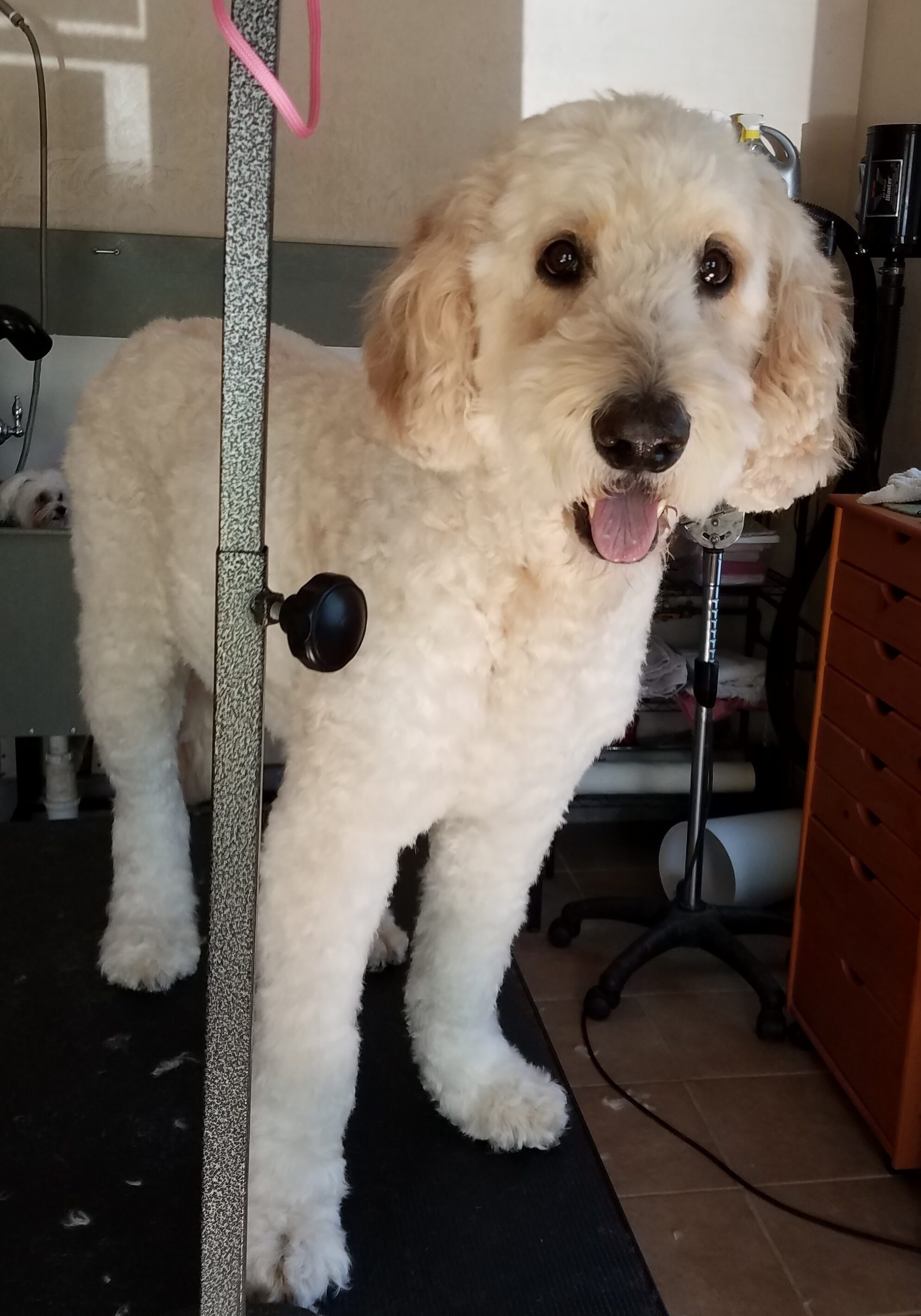
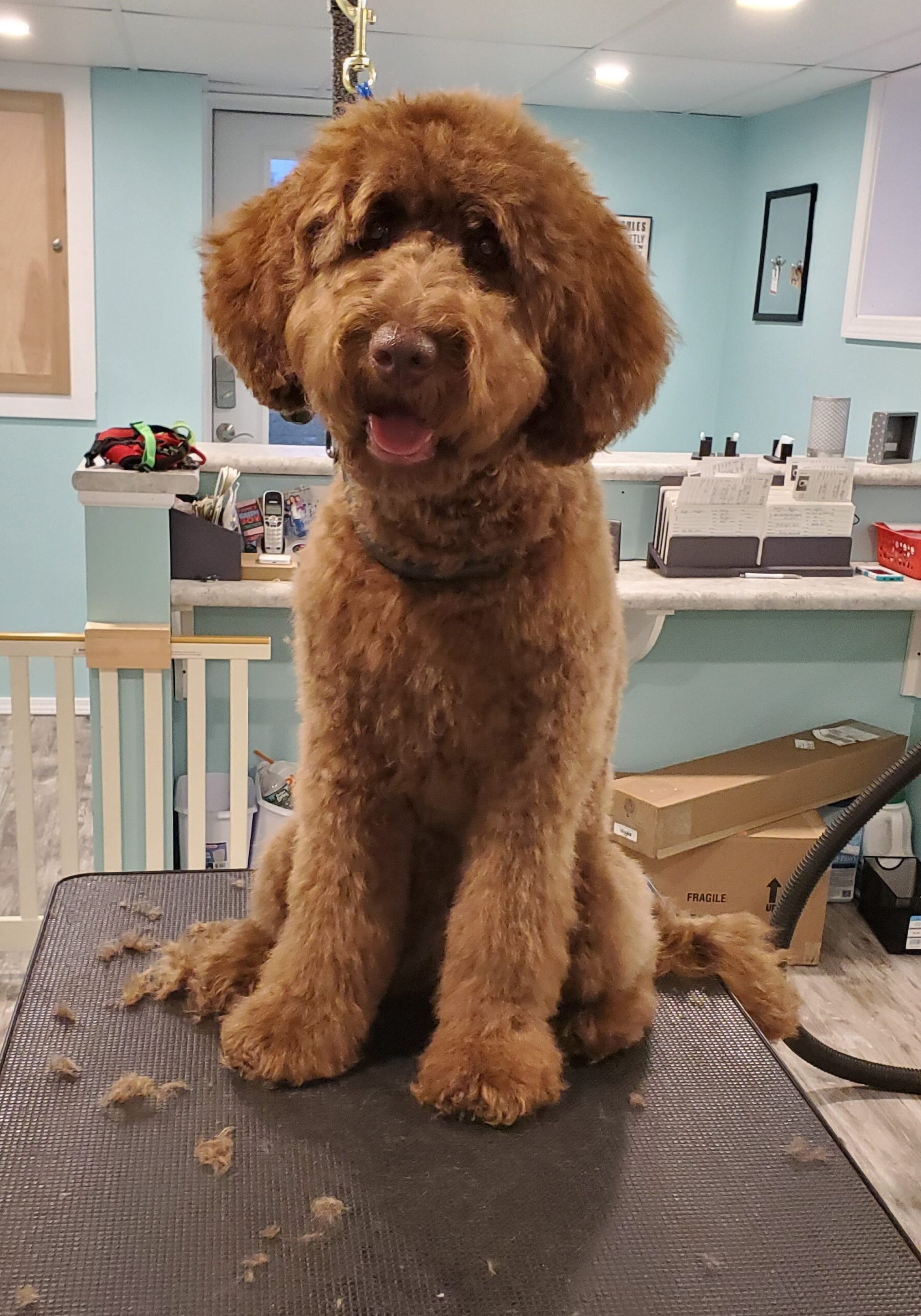
The Transition (Coat Change)
We call the first 6 months the honeymoon phase. Your doodle's hair is soft and wispy, brushing takes only a few minutes and you usually see very few tangles. This is why home grooming early is so beneficial to how your dog reacts to grooming later when his coat becomes more laborious to maintain.
Around 6-7 months, you'll start to see some changes with the tail growing in, the coat feeling a little thicker and fuller, and sometimes you see a change in color or texture, and the coat tangling up easier. This is the start of coat change, your puppy coat leaving as the adult coat grows in.
Because a doodle puppy coat doesn't shed out, the puppy coat and the adult coat have to live together coming out of the same cuticle for months, and these coats do not live together harmoniously. A good comparison is sewing thread and yarn, they are 2 different thicknesses and textures, just like the puppy and adult coat.
This is where the matting happens. Until now, all knots you encountered were at the top or middle of the strand, from hairs swishing against each other and getting wrapped up. Once the coat change starts, the adult coat is trying to push the puppy coat out, and the matting also happens at the root of the strand. This is where home grooming with the right tools is most beneficial. Using the wrong brush, and not using a comb through the coat may lead to you believe the coat has no knots while mats are forming at the root. By the time the next groom comes it's too late, and the coat needs to be shaved short.
WE DO NOT WANT TO SHAVE YOUR DOODLE. We can't say that enough. This is a lose-lose for everybody, the owner, the groomer, and especially the dog. Shaving a matted doodle has a big risk for injury, is way more work for us than a regular haircut, and the end result is not as pretty. The dog has an uncomfortable experience as we pry mats off the skin. Nobody is happy. The best way to avoid getting a shave down is keeping your puppy on the monthly schedule the first year, and 4-6 weeks going forward, so we can identify changes in the coat and alert you to them so you can maintain at home and keep the dog longer.
Because doodles are a mixed breed, the transition can be unique to every dog. Some transitions happen in a matter of weeks, and others can take several months. You may not see the adult coat in its full glory until close to 2 years old.
During the transition, we may notice you are 'in the thick of it' as we say and may suggest you do a slightly shorter trim to keep up with grooming. Sometimes taking the dog down an extra 1/2 inch during the transition can help you get ahead of it and save the coat from getting a short puppy cut or shave down mid-transition.
Once you reach the other side of the transition, we will start to see a pattern forming on how long your doodle's coat can go between grooming, and we set your schedule accordingly.
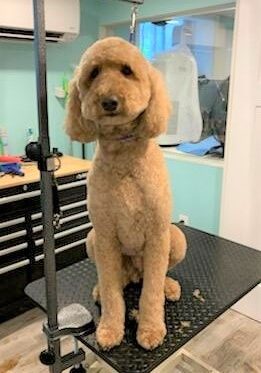
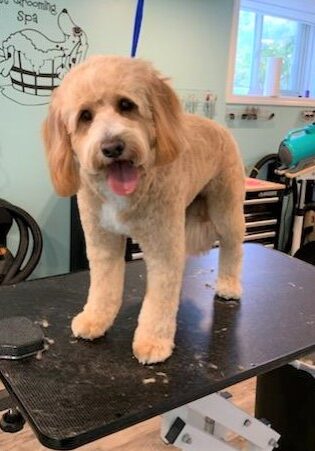
What should my doodle look like?
This is probably one of the most important segments on this page for me to communicate to my doodle owners. When doodles starting coming to my salon about 12 years ago, owners brought the dogs regularly, I did my thing, they left the salon fluffy and cute, and there were no issues. Then social media exploded, and for the past 5 years owners are coming in with unrealistic expectations for their dog's coat. I often get asked if we can "not trim them because we love them this length", which is not how it works. If your doodle is more than 7 months old and a coat longer than an inch in length, I can confidently say it has matting. I say this because we groom doodles all day long, and we know how much work it is to completely brush and comb them out. On a 25lb doodle, the combing and brushing required to keep your dog longer than an inch would take you more than an hour a day.
At drop off, we are often told 'he doesn't have any knots'. Saying a doodle has no knots is like saying a human has no imperfections. Sure they do, you may not see them, but they are there. The nature of the doodle coat is to get matted, and if your dog is living its best life, then it is making knots all day long rolling on the carpet and pouncing around in the yard. And we want your dog to live its best life, and we have ZERO judgement in knot shaming you. My dog gets knots all the time, I feel them when I'm petting him, go grab some scissors and cut them out. In order to keep your doodle mat free you literally have to go through the entire dog brushing with your slicker brush (body, flanks, belly, undercarraige, chest, legs, hocks, feet, toes, outside and inside of ear flaps, armpits, tails, chin, snout and face), and then cover every inch of them again with a metal comb to catch everything the brush missed. That's a lot. A whole lot. Especially if you have a job, a house, a family, any other hobbies other than brushing your doodle.
Doodles are not meant to have 4 inches of disheveled hair. The AKC recommends a body length of 1/2" - 3/4", the legs to be 1/4" longer than the body, and the face, feet, and tail to be rounded. What this looks like is the 2 pictures you see at the top of this segment. The reason they recommend this length is because after 3/4" in length your full time job is now brushing your doodle to keep it knot free.
Ok, so what is the balance? It's finding what fits your lifestyle. How much homecare do you want to do for an extra 1/2 inch of hair? We have doodles that get brushed daily and come every 3 weeks so we can keep them at an inch. That's what it takes. Then we have people with kids who don't have time for that and like 1/2" every 6 weeks. That's fine by us. It really becomes preference, but you can't have a long doodle that doesn't get brushed every day and only gets trimmed every other month. We have no magic wand that can make that happen.
The best way to keep your doodle looking his best is to be honest with us about your lifestyle. If you ask us to keep the dog longer (1") and then don't have time to brush daily, you've just created an uncomfortable groom for your pup next visit. We can create an adorable haircut on your doodle for whatever lifestyle fits you.
As I explained above, because your dog doesn't shed out its coat, the maintainence comes from trimming the frizz. If you don't trim the frizz every 3-5 weeks, you are essentially letting that hair die from the tip. Dead, frizzy tips work their way to the root and mat along the way, leading to a shave down.
Puppies can be left a little longer for two reasons: their puppy coat grows in spurts, so the frizz line also grows sporadically, and puppy coats don't act like adult doodle hair, they are thin and easier to manage. We like to leave puppies at around 1.25", keeping that cute, scruffy puppy look as long as we can. Your puppy only looks like a puppy for about 10 months before it is all grown up.
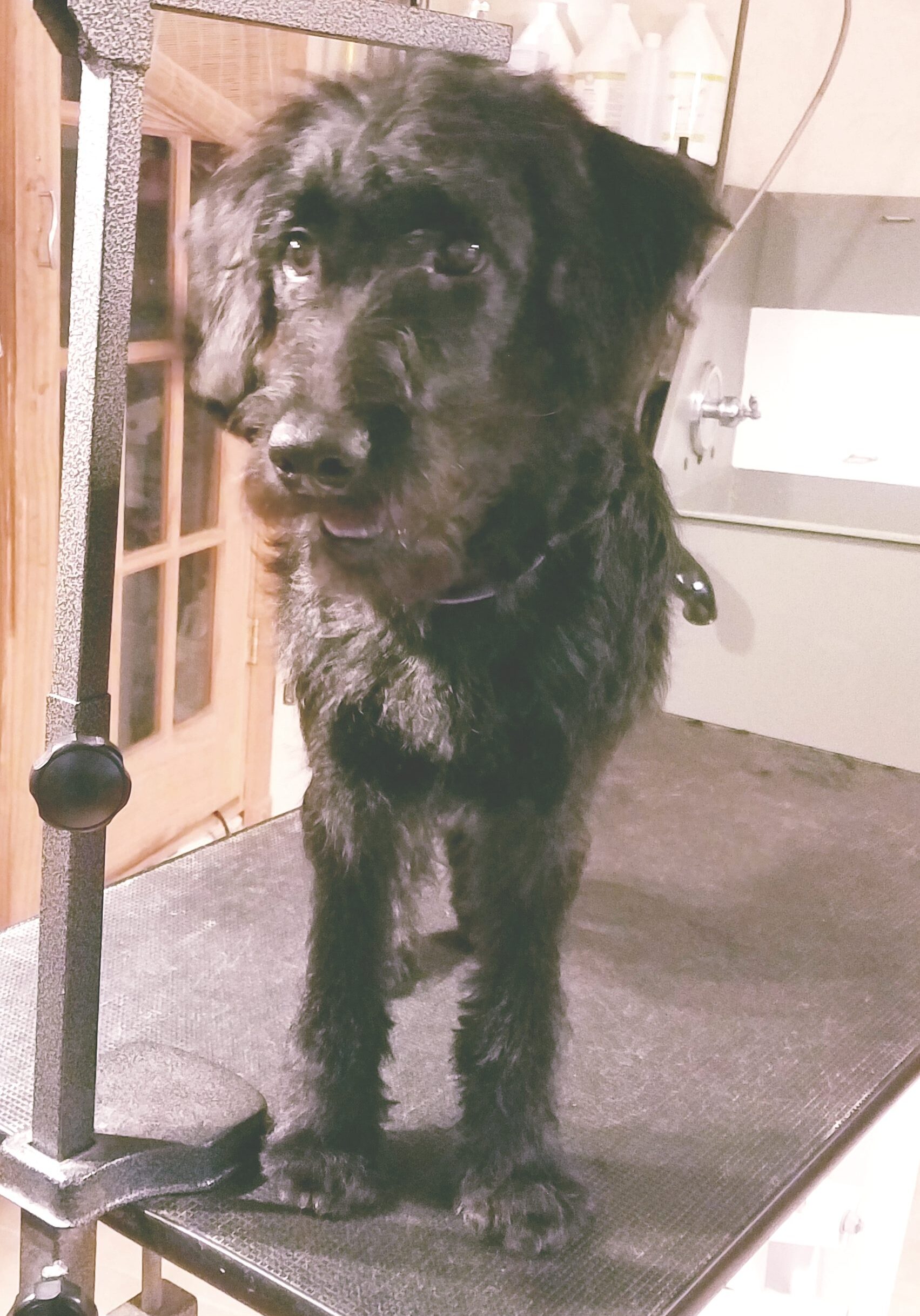
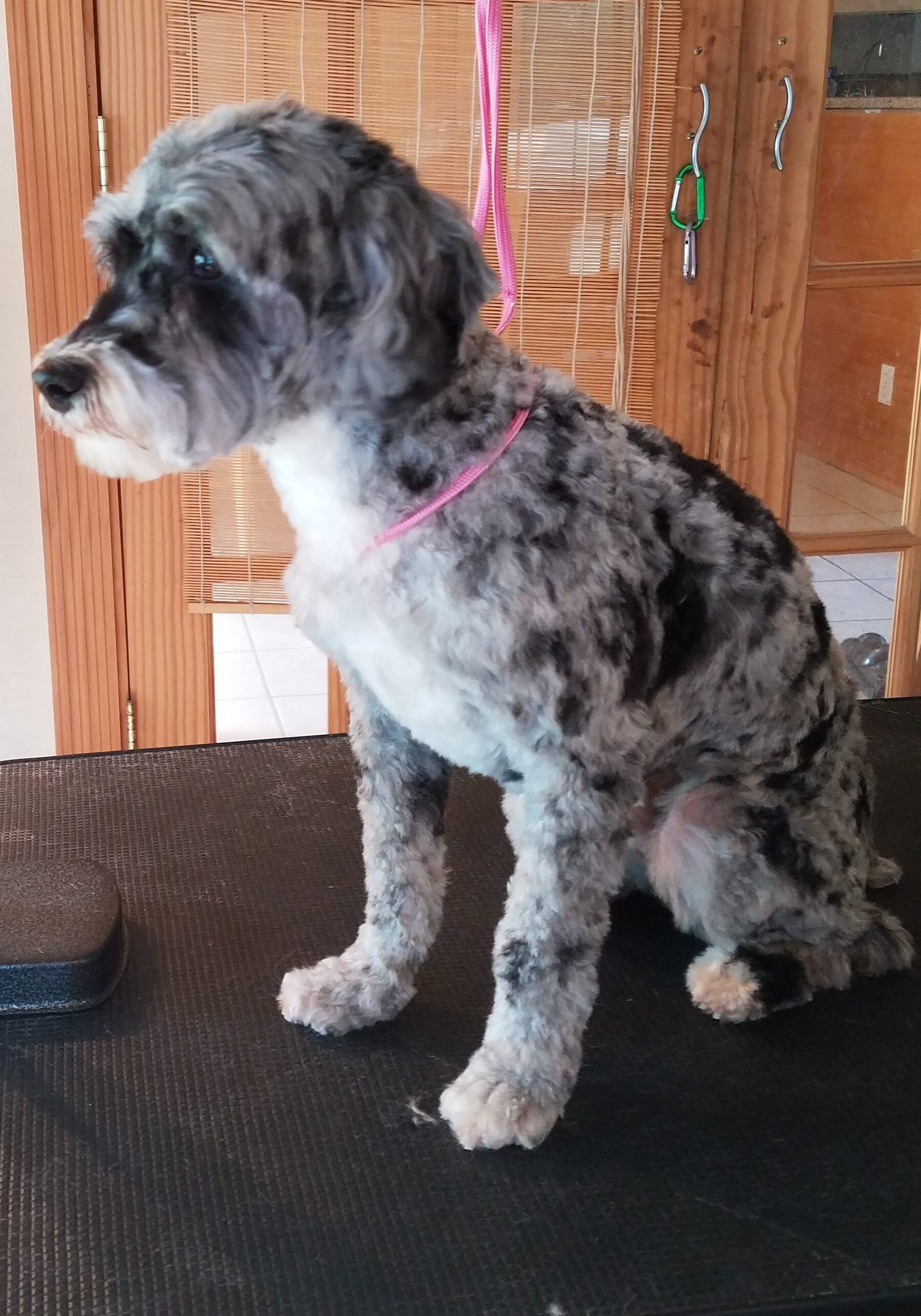
How often do I need to bring my doodle?
Doodles need a haircut every 4-6 weeks (the industry recommendation is actually 3-5 weeks, but like I said I am a practical groomer). If you want to keep a long doodle length, you will need to come every 4 weeks. If you don't mind a shorter trim, then 6 weeks works. It basically comes down to the longer you want to keep your doodle, the more frequently you need to come. The reason behind this is because as I mentioned above, the coat doesn't fall out, it unravels. That unraveled portion can never be put back together, it needs to be trimmed off (think end of a piece of yarn). To keep the coat longer, you need to stay on top of that unraveling by trimming it off as soon as it starts. If you wait 6 weeks between appointments a good portion has unraveled and we have to trim at the frizz line, leaving your dog a little shorter.
We groom over 800 doodles, and we have less than 25 doodles that have a coat that can make it 8 weeks between groomings. Most of those dogs have a thinner, wavy coat with almost no curl. The majority of doodles have a softer, curlier strand. Your dog's coat will tell you it's time limit for grooming. If you are brushing daily, you will notice once your doodle reaches 'X' amount of weeks(4 weeks, 5 weeks, 6weeks) they become more challenging to brush without a trim. This is because it gets hard to stay ahead of the knots the frizz is making. The trick is to find the cusp of when your doodle gets there. We've had owners that want to come every 6 weeks and always leave with a shorter cut than they want, they move to 5 week appointments and it's like grooming a different dog. The hair isn't matted, brushes out easily, the frizz line is small, and the hair can be trimmed at a longer length, which makes that owner happier.
We have many doodles that can't go more than 4 weeks from the moment they transition. I wish I could give you a more definitive answer when you walk into the shop for the first time, but really it's a game of wait and see what the coat turns out to be.
That being said, here at Shampooch we require your doodle to be on a schedule for grooming. Regular maintainence is required with doodles. We can book you a recurring appointment for the year or you can prebook your appointments online. With frequency and consistency of grooming, you can train the coat and make home grooming less time-consuming between visits. Many owners that have been coming on a schedule for a few years say they went from brushing 5-6 times a week between groomings to 3-4 a week with the same results.
There are several goals for setting a schedule. The most important goal is to have a safe groom for your pup and eliminate the cycle of "I love them fluffy so I wait too long, and then they get shaved down to the skin". Rinse. Repeat. This cycle will never correct itself, and often leads to a dog that hates grooming, grooming that costs a lot of money because of all the matting, a fair amount of risk of cutting the dog to remove the matting, and a coat that you have trained to just get matted and then shaved. And that's if your doodle tolerates it. We see a lot of doodles that are over the grooming process, and now go to the vet to be sedated and sheared like a sheep every few months. Part of the reason for this Doodle tab on this website is to help educate. I am always explaining that if you want a nicer, longer doodle coat, then a schedule will help accomplish that.
The second goal is to create a positive grooming experience for your doodle. No matter how gentle we are, removing mats from doodles hurts. In a doodle's lifetime they need in excess of 100 grooms, so grooming on a schedule before the mats arrive sets your dog up for an enjoyable spa day vs. a painful no-fun session.
The third goal is to get you the most bang for your buck. It might sound counterproductive to say the more often you come the less money it costs you, but this really is the case. Pricing is based on how long it takes to groom the dog and the condition of its coat. A few weeks difference can make a huge difference in price.
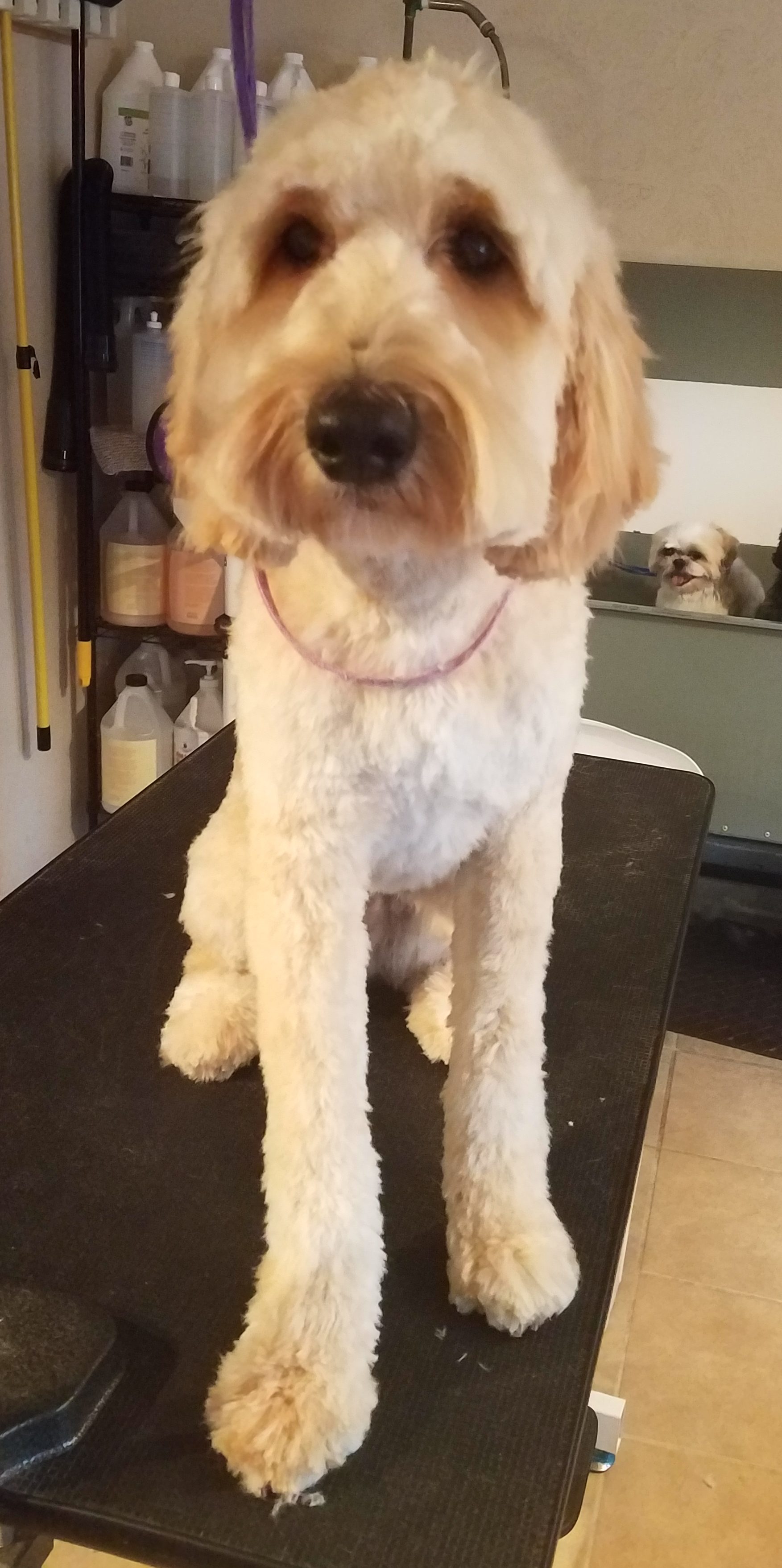
![20191119_125546[1] 20191119_125546[1]](https://shampooch.org/wp-content/uploads/bb-plugin/cache/20191119_1255461-scaled-portrait-ee58b21a5f6c415775b9c51e7e4de058-5c71f046bc8b1.jpg)
Pricing
It's impossible to give an exact quote, because no 2 coats are the same. There are so many doodle mixes, it's like a wild card. I've had a 12 lb mini doodle take 2 of us over 3.5 hours, and a 65 lb labradoodle that surprisingly took me under 2 hours flying solo. You just never know. We often get calls asking how much for a doodle, and all we can really do is give a price range until we've groomed the dog. We base the price on coat condition, size, temperament, and time it takes to groom. I've listed our price ranges on the pricing tab, and it's important to note these are the prices if your dog is coming regularly on a 4 to 6 week schedule. If the dog hasn't come in for 8 or 10 weeks, the price will be higher.
Doodle puppies in for their first clean up will be a lower price than a full groom. As your puppy grows, and the coat matures we adjust the price accordingly each visit. This sometimes can be a jump of $10 or more from one visit to the next as your puppy grows quickly and his hair really fills in.
There are so many variables that contribute, that we often double up 2 groomers on a doodle. Depending on the coat type, a doodle can take 30 min to wash, over an hour to hand dry, another 30 min to brush out and an additional hour to groom. That's a lot of patience to ask for from a dog. Assisting each other on grooms can shorten that time to 2 hours, and make the dog more comfortable.
It is also important to note your price may differ from groom to groom. Unlike a yorkie that once on a schedule is fairly predictable, doodle coats are not. During the winter some doodle coats tangle up from snow, and in the summer from swimming. You might have had a busy month and didn't home groom as much and the coat needs additional time and effort to get the same results. Maybe your doodle has been wearing a sweater or harness that has caused extra tangles. We genuinely calculate the grooming cost by the groom we did for this appointment.
I hope this has helped explain some of the most common questions with grooming. We want you to know why your friend's doodle may only take 90 minutes while yours takes 2.5 hours. Or why their dog is $20 less than your dog. Or why they barely brush their dog between grooming but yours has to be brushed often. Every doodle is really so different, and we do our very best to give you the best results for a very reasonable price. Thank you for taking the time to read this and learn about grooming your doodle.
